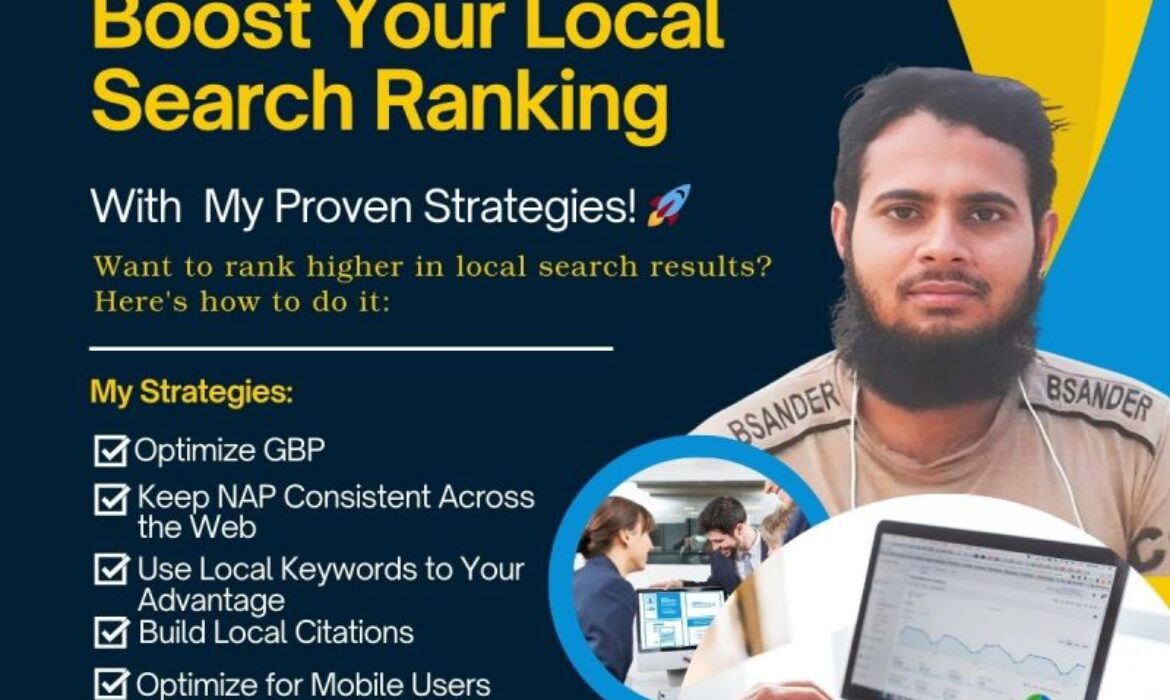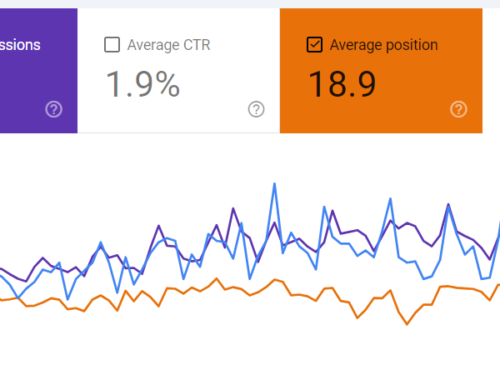Ranking higher in local search results can significantly boost your visibility, foot traffic, and sales, especially if you’re a local business. The way people search has changed, and so has Google’s algorithm, placing a heavy emphasis on semantic SEO and Google EEAT (Expertise, Authoritativeness, Trustworthiness). This guide will walk you through the essential steps to optimize your local search presence, using strategies that align with Google’s latest updates and best practices.

1. Optimize Your Google Business Profile (GBP)
Google Business Profile is the cornerstone of local SEO. Ensure your profile is fully optimized:
Complete every section: Fill in all the details, including business name, address, phone number, website URL, and business hours.
Select the right categories: Choose primary and secondary categories that accurately describe your business.
Add high-quality photos: Upload images of your storefront, interior, and products to make your profile more appealing.
Collect and respond to reviews: Encourage satisfied customers to leave positive reviews and always respond to them, whether they’re good or bad.


2. Ensure NAP Consistency
Consistency in your NAP information across all platforms is crucial. Google cross-references your business information across the web to verify its accuracy. Inconsistent information can confuse search engines and lower your ranking.
Audit your NAP: Regularly check that your business name, address, and phone number are consistent on your website, GBP, social media profiles, and all local directories.
Use structured data: Implement Local Business Schema markup on your website to help search engines understand your business details better.
3. Leverage Local Keywords
Targeting local keywords is essential for ranking in local search results. These keywords often include your city, neighborhood, or region.
Research local keywords: Use tools like Google Keyword Planner, SEMrush, or Ahrefs to find keywords that your local audience is searching for.
Incorporate keywords naturally: Add these keywords to your meta titles, descriptions, headers, and throughout your website content without overstuffing.
Create localized content: Write blog posts or service pages that focus on local events, news, or topics that are relevant to your community.
4. Build Local Citations
Local citations are mentions of your business on other websites, and they help Google verify your location and legitimacy.
Get listed on relevant directories: Submit your business to local directories such as Yelp, Yellow Pages, and industry-specific sites.
Focus on high-quality citations: Not all citations are created equal. Prioritize listings on sites with high domain authority and relevance to your business.

5. Optimize for Mobile
Mobile optimization is no longer optional, especially for local searches. The majority of local searches are conducted on mobile devices, so your website must be mobile-friendly.
Use responsive design: Ensure your website looks good and functions well on all devices.
Speed up your site: Optimize images, use a content delivery network (CDN), and minimize code to improve page loading times.
Enable click-to-call: Make it easy for mobile users to contact you with a single tap.
6. Encourage and Respond to Reviews
Reviews are a major ranking factor in local search. They also build trust and influence potential customers.
Ask for reviews: Encourage satisfied customers to leave reviews on your Google Business Profile and other review platforms.
Respond promptly: Show that you value customer feedback by responding to all reviews, especially negative ones. Addressing concerns can turn a negative experience into a positive one and demonstrate your commitment to customer service.
7. Utilize Google Posts and Q&A
Google Posts and the Q&A section in your Google Business Profile are underutilized tools that can enhance your local SEO.
Create regular posts: Share updates, offers, and news directly on your Google Business Profile. These posts can increase engagement and provide fresh content for Google to index.
Monitor the Q&A section: Answer common customer questions to provide helpful information upfront, and consider adding your own questions if none exist.
8. Use Social Media to Boost Local Visibility
Social media platforms can enhance your local presence and drive traffic to your website.
Share local content: Post about community events, partnerships with other local businesses, and local customer testimonials.
Engage with local followers: Respond to comments, participate in local discussions, and use location-based hashtags to increase your reach.
9. Track Your Progress with Local SEO Tools
Monitoring your local SEO performance is key to understanding what works and what needs improvement.
Use Google Analytics: Set up goals and track conversions that come from local searches.
Monitor your rankings: Tools like BrightLocal or Moz Local can help you track how well you’re ranking for local keywords.
Audit your citations: Use tools like Whitespark to find and fix any incorrect or inconsistent citations.
Conclusion
Ranking higher in local search results requires a well-rounded approach that combines traditional SEO techniques with local-specific strategies. By optimizing your Google Business Profile, ensuring NAP consistency, leveraging local keywords, and staying active on social media, you can improve your visibility in local search and attract more customers. Remember, local SEO is an ongoing process—regularly update your content, monitor your performance, and adapt to changes in search engine algorithms to stay ahead of the competition.






